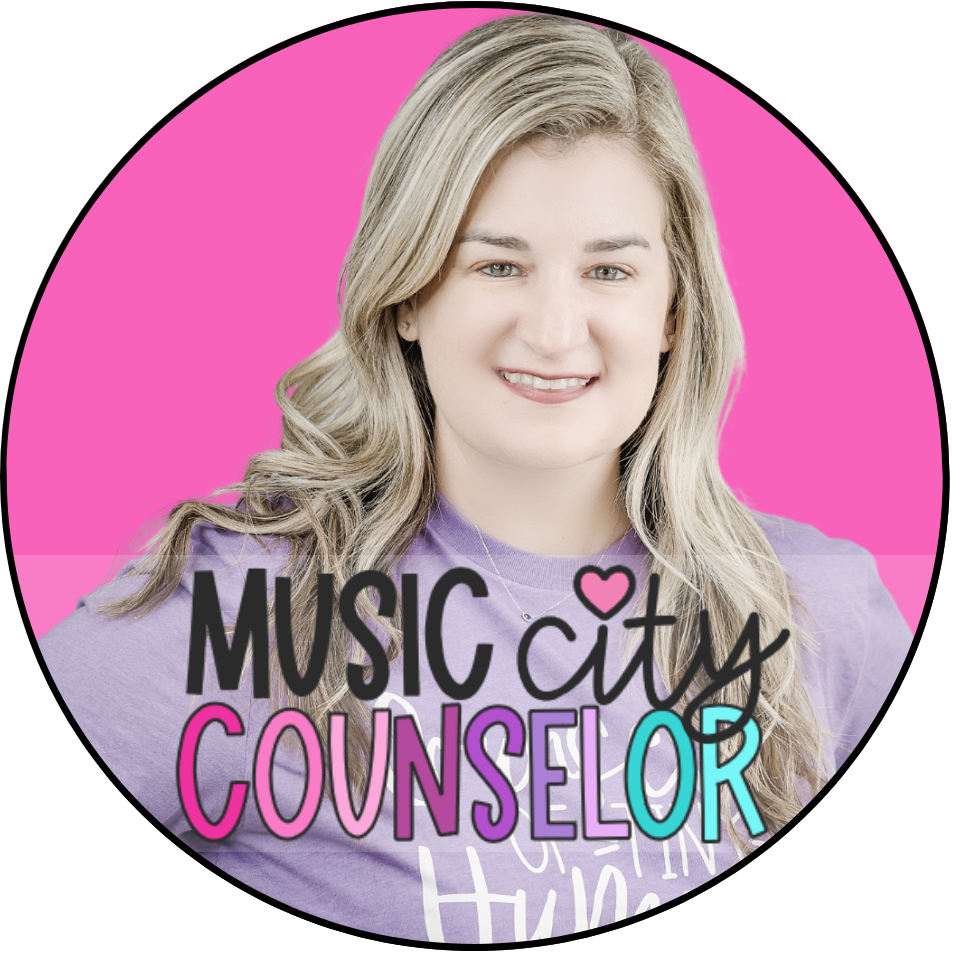
Hey y’all! Thanks so much for stopping by. My name is Laura and I am an Elementary School Counselor turned Curriculum Writer. At my precious school in Nashville, TN, 97% of my students were living in …
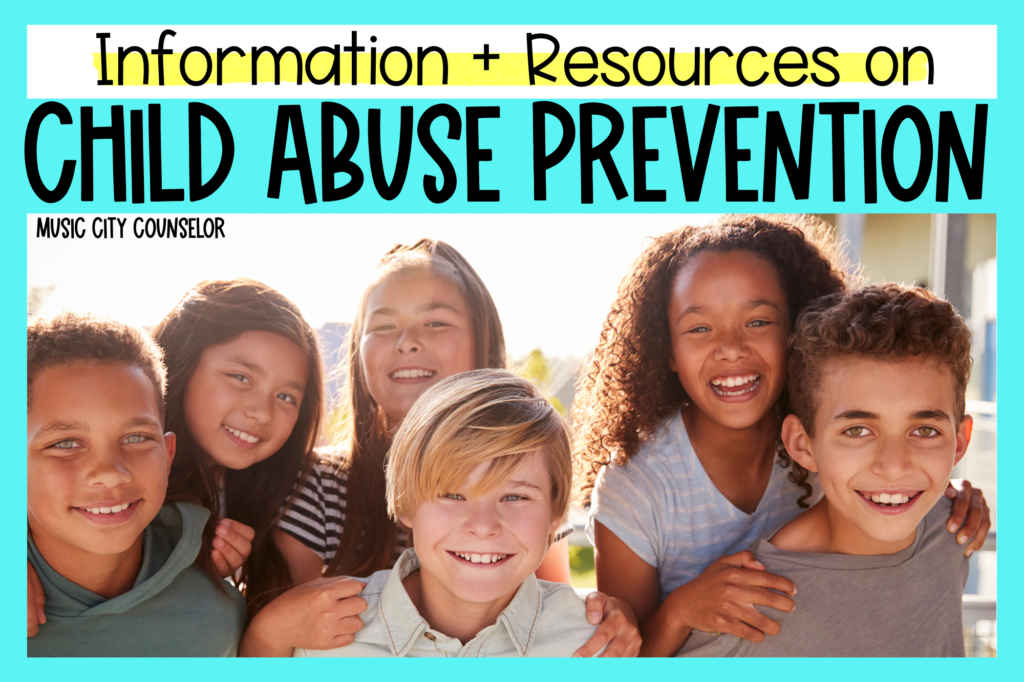
I was a first-year school counselor standing at the front door greeting students as they walked into school for the day. A new second grader approached me and asked for a snack. I noticed right away that she looked unkempt – her clothes were dirty and her hair was matted. I had some treats in my office and asked her to join me. When we arrived at my office, she ate and asked if she could tell me a secret. She then shared that her mom had been gone all weekend and left her in her room to watch TV alone. She revealed that her mom kept all of the food locked up and she couldn’t find the key. She couldn’t remember the last time she ate.
My heart sank. I wanted to do anything I could to help her. But this was a heavy, overwhelming issue for a brand new counselor. I consulted with my district supervisor who walked me through the steps of submitting a DCS report and gathering resources for the student (including some bags of food to take home and fresh clothes). This experience inspired me to learn as much as I could about child abuse. I wanted to prevent this from happening to other students and intervene effectively when it did.
In honor of Child Abuse Prevention Month, I wrote this blog post that outlines what child abuse is, the signs and symptoms of abuse, resources to teach prevention lessons, and what educators need to know to support students with this tough, sensitive, and critical issue.

Child abuse is when a parent or caregiver, whether through action or failing to act, causes injury, death, emotional harm, or risk of serious harm to a child. There are many forms of child maltreatment, including the following:
According to www.dosomething.org, and SCAN, 1 in 7 children have been abused or neglected in the past year. In 2018, 1,700 children died from abuse or neglect in the U.S., with neglect being the most common form of abuse. Every 11 seconds a child abuse report is made in the US. While boys and girls experience similar rates of abuse, children under a year of age are most vulnerable to maltreatment, accounting for almost half of child fatalities from abuse in 2018. In the same year, about 16% of abused children experienced more than one kind of maltreatment. In substantiated child abuse cases, at least 80% of the perpetrators were the child’s parent. Child abuse and neglect rates are 5 times higher for children with low socioeconomic status compared to children in families with a higher SES. However, this data may be incomplete as the actual number of abused children is likely under-reported. It is estimated that for every report made related to child abuse or neglect, there are 2 more that go unreported.
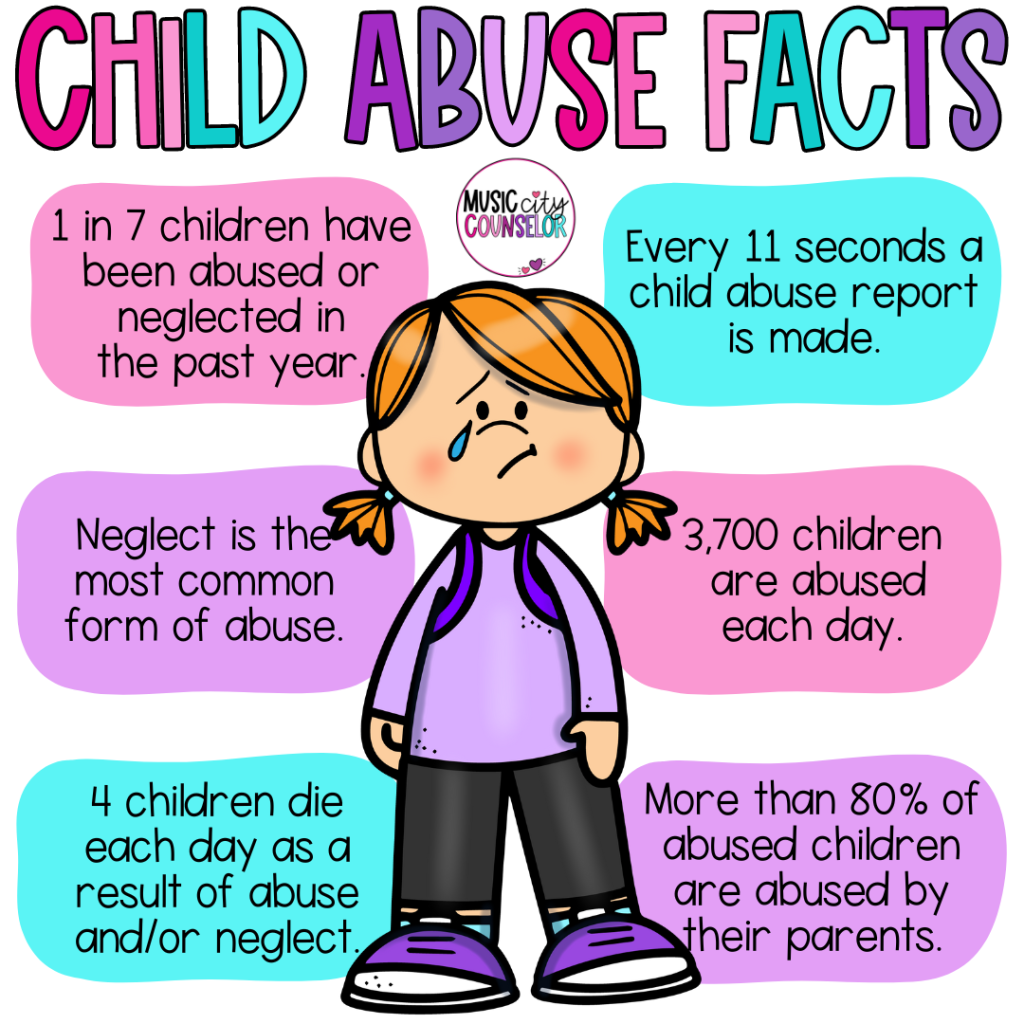
As educators, we spend a significant amount of time with our students, building and maintaining safe and healthy relationships with them. Therefore, we must be aware of changes in mood, behavior, or physical appearance in our students, as these could be potential signs of abuse. Here are the most common signs of child abuse in elementary students:
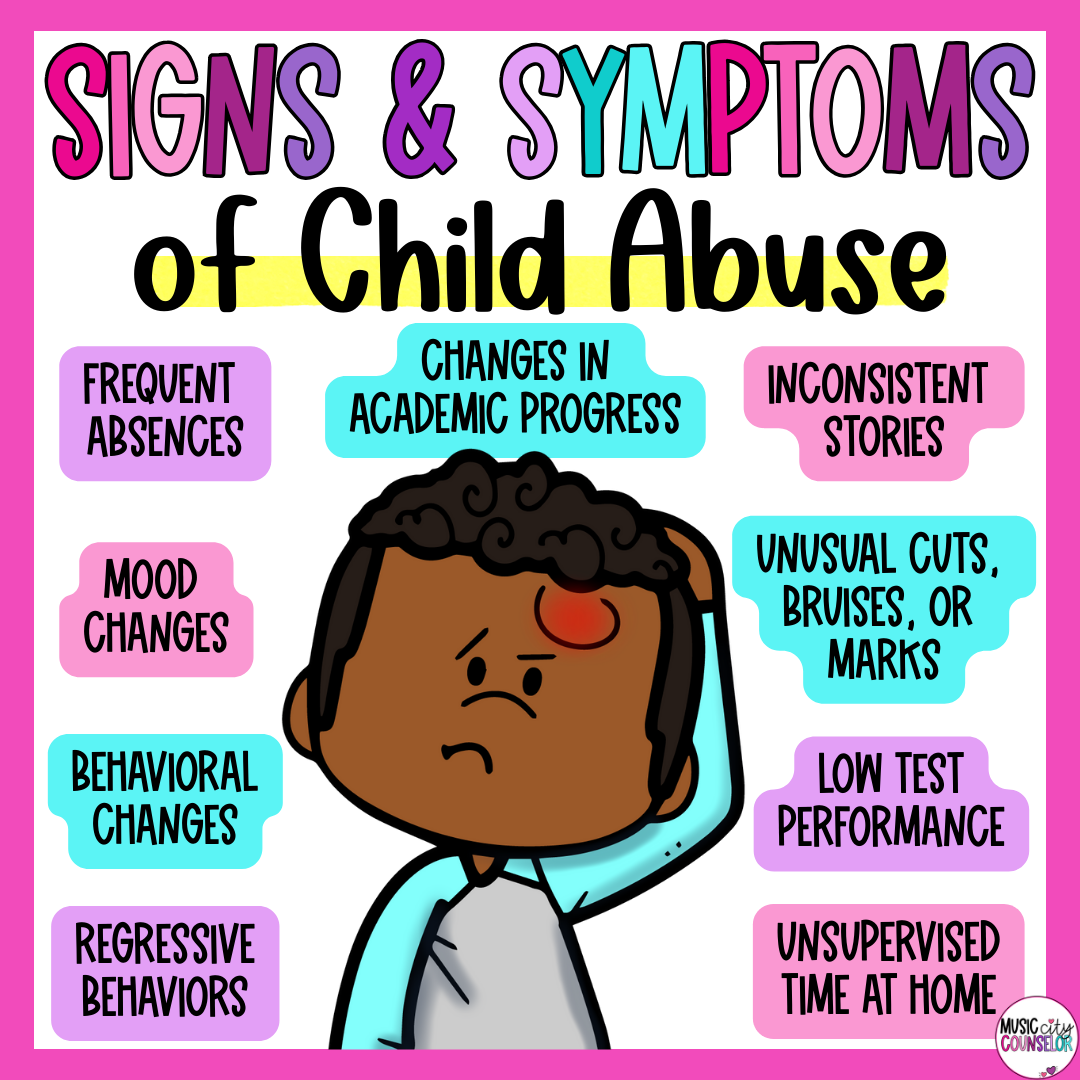
Abuse can have many long-term effects throughout childhood and into adulthood. Adult survivors are more likely to experience mental health difficulties, including depression, anxiety, bipolar disorder, PTSD, eating disorders, and substance use disorders. Adult survivors of childhood abuse are also more likely to engage in high-risk behaviors such as smoking, alcohol and drug use, and unsafe sex.
As educators, we wear many hats. One of our most important responsibilities, but one that many educators feel uncomfortable or ill prepared to handle, is to report any and all potential abuse or neglect to DCS (also called CPS) within 48 hours. Educators are mandatory reporters, meaning we are required to contact DCS, but are not expected to investigate or determine the claim’s validity. We provide the information and allow DCS to conduct their investigation. It is critical that the educator with first-hand knowledge of the abuse file the report, meaning whoever the child disclosed to. This way, the most accurate information can be passed to the proper authorities. DCS reports are kept confidential, meaning they will not identify who made the report to the child/family. Anyone who files a report in “good faith” is free from civil or criminal liability.
If a child discloses abuse to you, or gives you reason to suspect it, please respond in a calm and caring way, and provide a safe place for the child to share. Here are some tips for educators I have learned over the years:
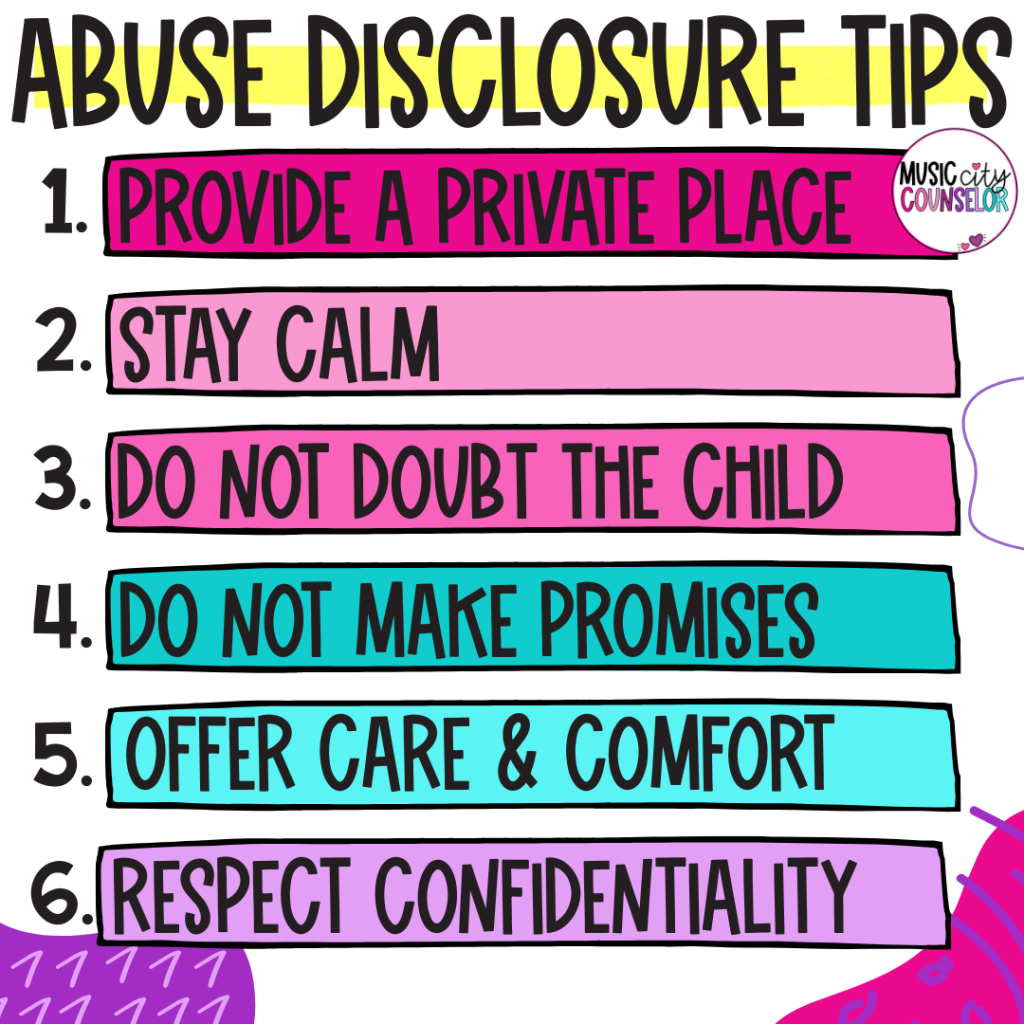
In the event that a formal report is necessary, here are some helpful tips for you:
You may have heard the term “Erin’s Law” when referring to child abuse prevention lessons and resources. It is named after childhood sexual assault survivor Erin Merryn who introduced the legislation in her home state of Illinois. Thanks to Ms. Merryn, Illinois was the first state by law to mandate child sexual abuse prevention education. As of July 2019, Erin’s Law has been passed in 37 states.
“Erin’s Law” requires that all public schools provide a prevention-oriented child sexual abuse program that teaches:
My state of Tennessee is an Erin’s Law state, and I remember being a brand new counselor and my district supervisor asking me to teach a child abuse prevention lesson to all grade levels, PreK – 4th. My district did not provide any materials and I felt completely in over my head. I wanted to teach the lesson in a sensitive, gentle, and developmentally appropriate way. But, what if I said the wrong thing? What if I didn’t explain myself well? What if I offended someone? If only I had the resources back then that I have now, I could have felt more confident, prepared, and ready to teach this tough topic. After all, it could safe a life!
When teaching sensitive topics such as child abuse, it’s essential to be open, clear, and developmentally appropriate with our language. For example, I choose to use the terms, “safe touch,” “ouch touch,” and “private touch” rather than “good touch” or “bad touch.” Using words like “good” and “bad” can create confusion and shame in children.
It is also critical to enlist parents’, teachers’, and administrators’ help and support in teaching this critical information. I recommend sending a letter home to parents approximately 2 weeks in advance that informs them of the information covered in the lesson, offers helpful resources they can use at home, and gives them the opportunity to opt their child out of the lesson (although I’ve never had a parent do this, thankfully!). I always encourage parents to start this important conversation at home and to remind their child that they are a safe person that they can talk to. Also, make sure to inform your administrator and teachers that you are teaching this lesson and provide them with the materials that you plan to use. Every year, I had at least 2-3 children disclose abuse after my lesson, and occasionally parents would call with questions, so I wanted all of our stakeholders to be aware and on the same page. If you are a counselor who teaches in your own classroom or during specials, consider asking the teacher to stay for the lesson because of the sensitive nature of the topic. This way, teachers see the same material that their students do and students realize that their teacher is on the same “team” as their counselor to help keep them safe. All of these extra steps help create a safe, nurturing, and informed environment for our children and these difficult conversations.
To teach children about the three types of touch and how to report child abuse prevention to a safe grown-up they trust, I use this lesson: Safe Touch and Child Abuse Prevention.
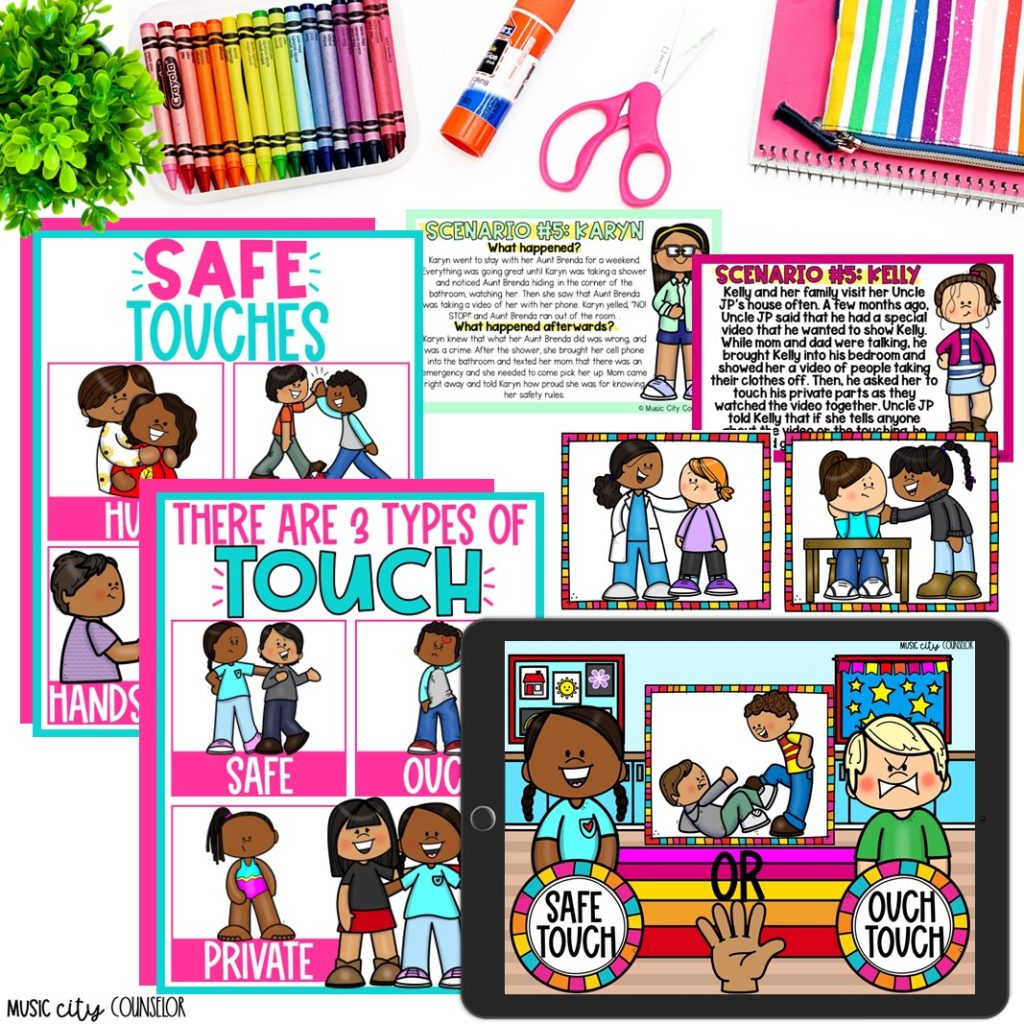
In this lesson, you’ll find examples and descriptions of the three types of touch as well as opportunities for students to discuss who they consider to be safe people in their lives. It’s important to emphasize that not everyone will have the same safe people. We can’t assume that all dads, aunts, coaches, etc. are “safe people” because, at times, they could potentially be a predator. Instead, emphasize that safe people vary from child to child and should be someone that trusts, loves, protects, and takes care of them.
In addition to learning about the 3 types of touch, it is is equally important for students to learn the difference between safe and unsafe secrets:
Safe secrets CAN be kept, and they:
Unsafe secrets CANNOT be kept, and they:
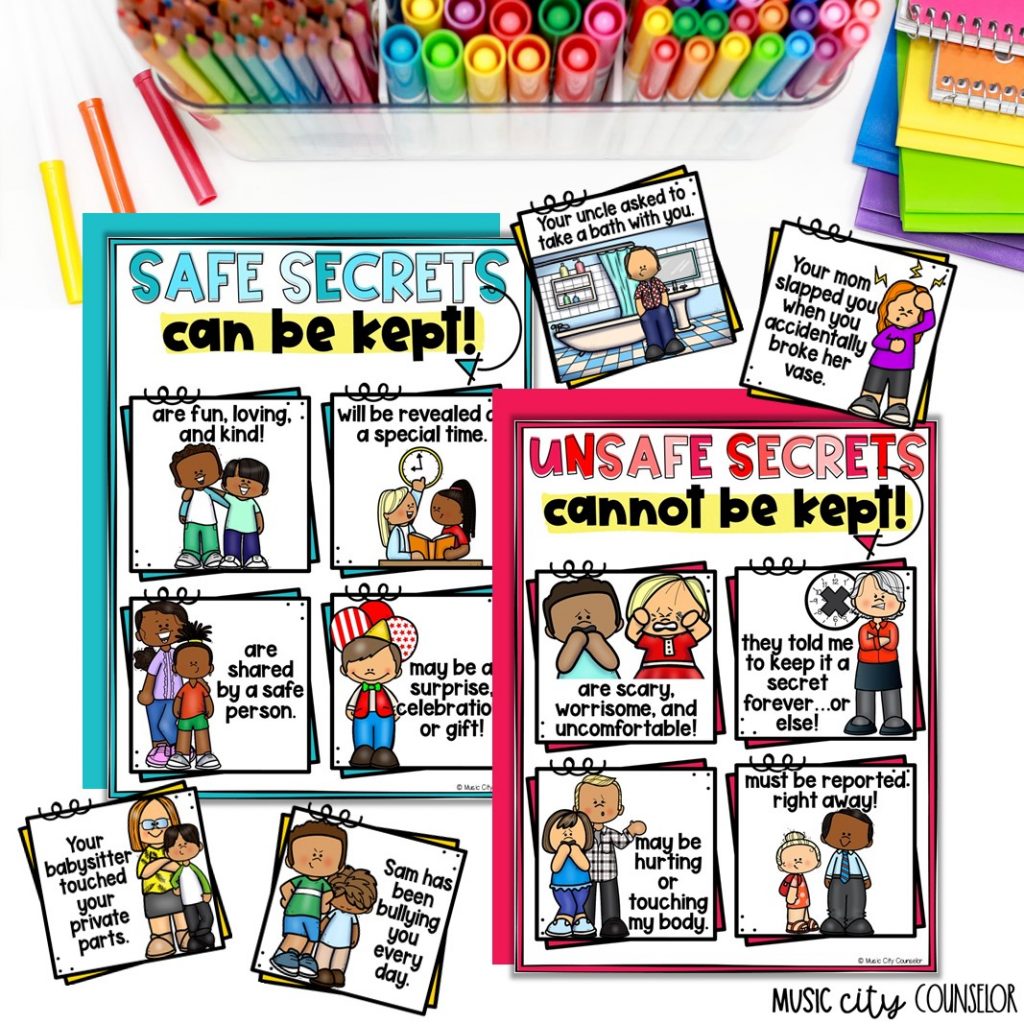
To teach this critical information, I created this digital and printable Safe & Unsafe Secrets lesson. It teaches students the difference between the two types of secrets and provides 20 realistic scenarios for practice. In the digital lesson, students read the scenario and then drag the X to the “safe secret” or the “unsafe secret” box.
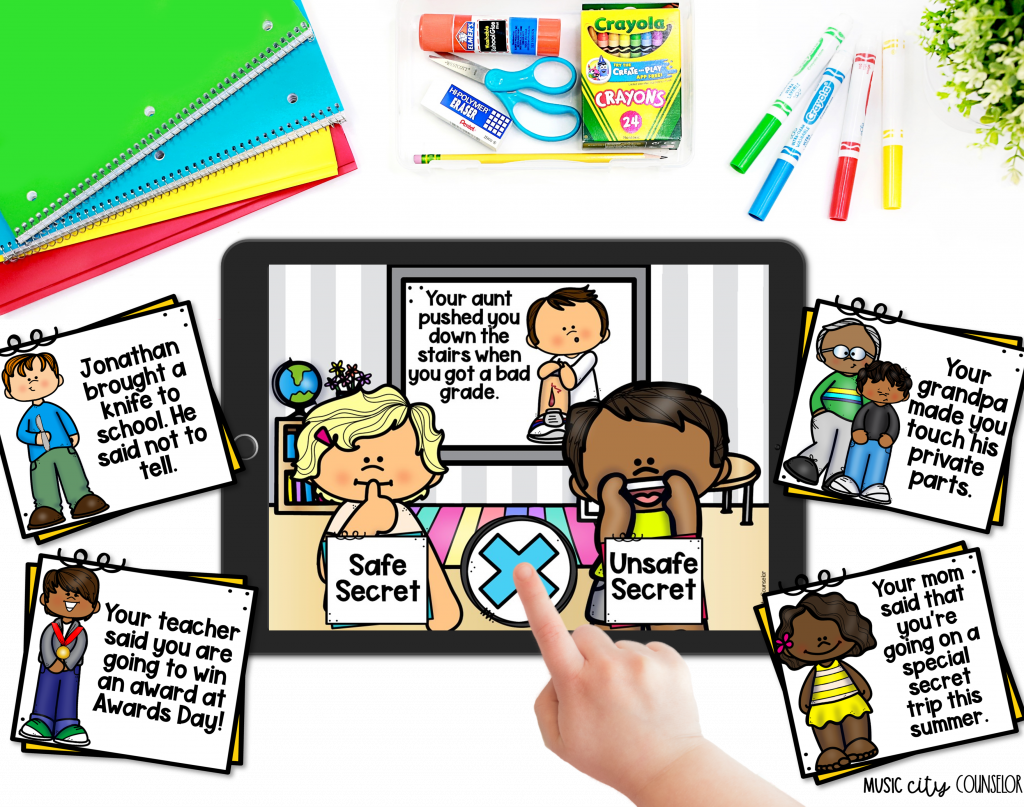
In the printable lesson, students sort the scenario cards into either the “safe secrets” or the “unsafe secrets” bag.
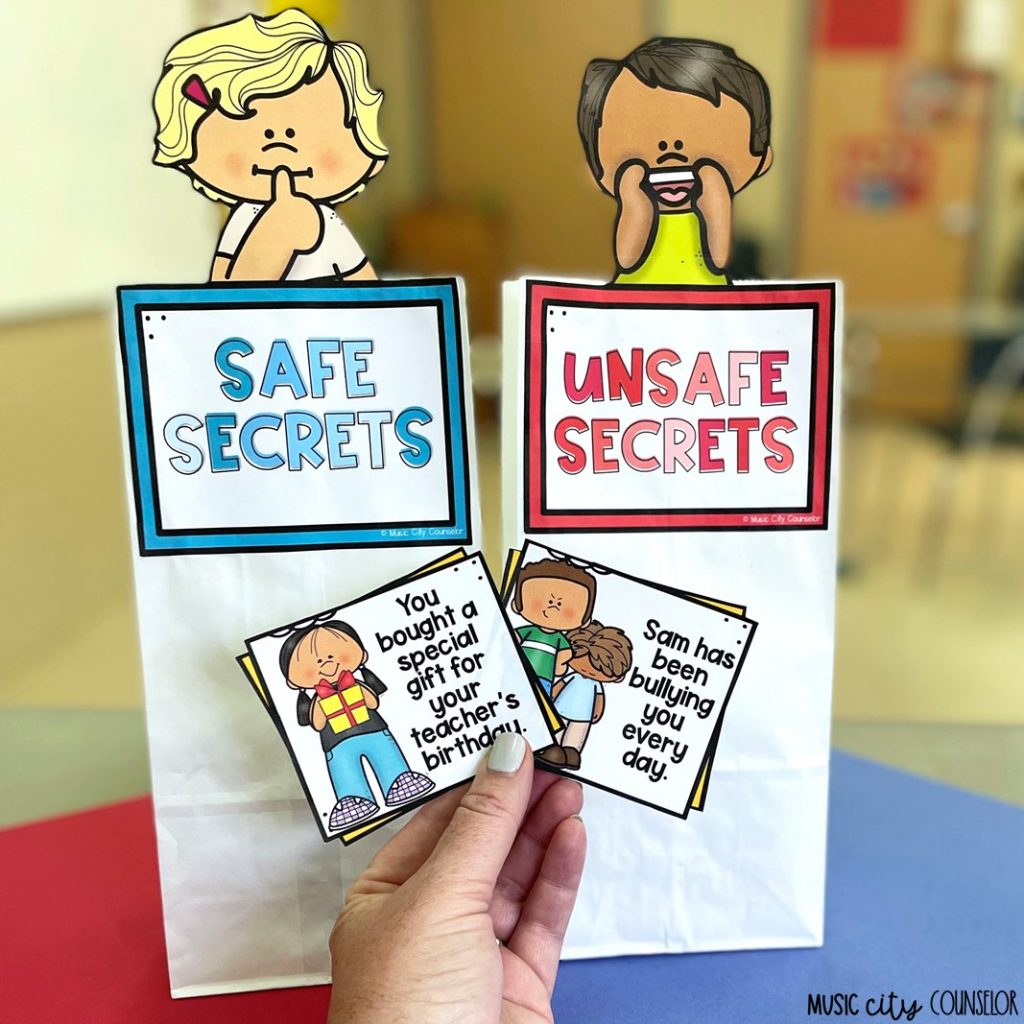
I hope this post taught you valuable information about child abuse and neglect, and provided some helpful resources and strategies to help you support students. As teachers and counselors, we have the power to help prevent child abuse and to intervene to save a life!
What is one important takeaway you had after reading this post? What are your go-to resources for teaching kids how to navigate tough situations? I’d love to hear from you!
You may be interested in:

| Cookie | Duration | Description |
|---|---|---|
| cookielawinfo-checkbox-analytics | 11 months | This cookie is set by GDPR Cookie Consent plugin. The cookie is used to store the user consent for the cookies in the category "Analytics". |
| cookielawinfo-checkbox-functional | 11 months | The cookie is set by GDPR cookie consent to record the user consent for the cookies in the category "Functional". |
| cookielawinfo-checkbox-necessary | 11 months | This cookie is set by GDPR Cookie Consent plugin. The cookies is used to store the user consent for the cookies in the category "Necessary". |
| cookielawinfo-checkbox-others | 11 months | This cookie is set by GDPR Cookie Consent plugin. The cookie is used to store the user consent for the cookies in the category "Other. |
| cookielawinfo-checkbox-performance | 11 months | This cookie is set by GDPR Cookie Consent plugin. The cookie is used to store the user consent for the cookies in the category "Performance". |
| viewed_cookie_policy | 11 months | The cookie is set by the GDPR Cookie Consent plugin and is used to store whether or not user has consented to the use of cookies. It does not store any personal data. |
2 Responses
Hello!
Thank you for all of this information.
Where did you get the information/ resources to support these lessons? Did you pull from existing information/resources supported by Eriin’s Law?
Thank you!
Johanna
Thank you for asking, Johanna! My lessons are research-based, and have a strong foundation in current best practices. I also use my personal experience of what works best with students! I hope that helps! 🙂